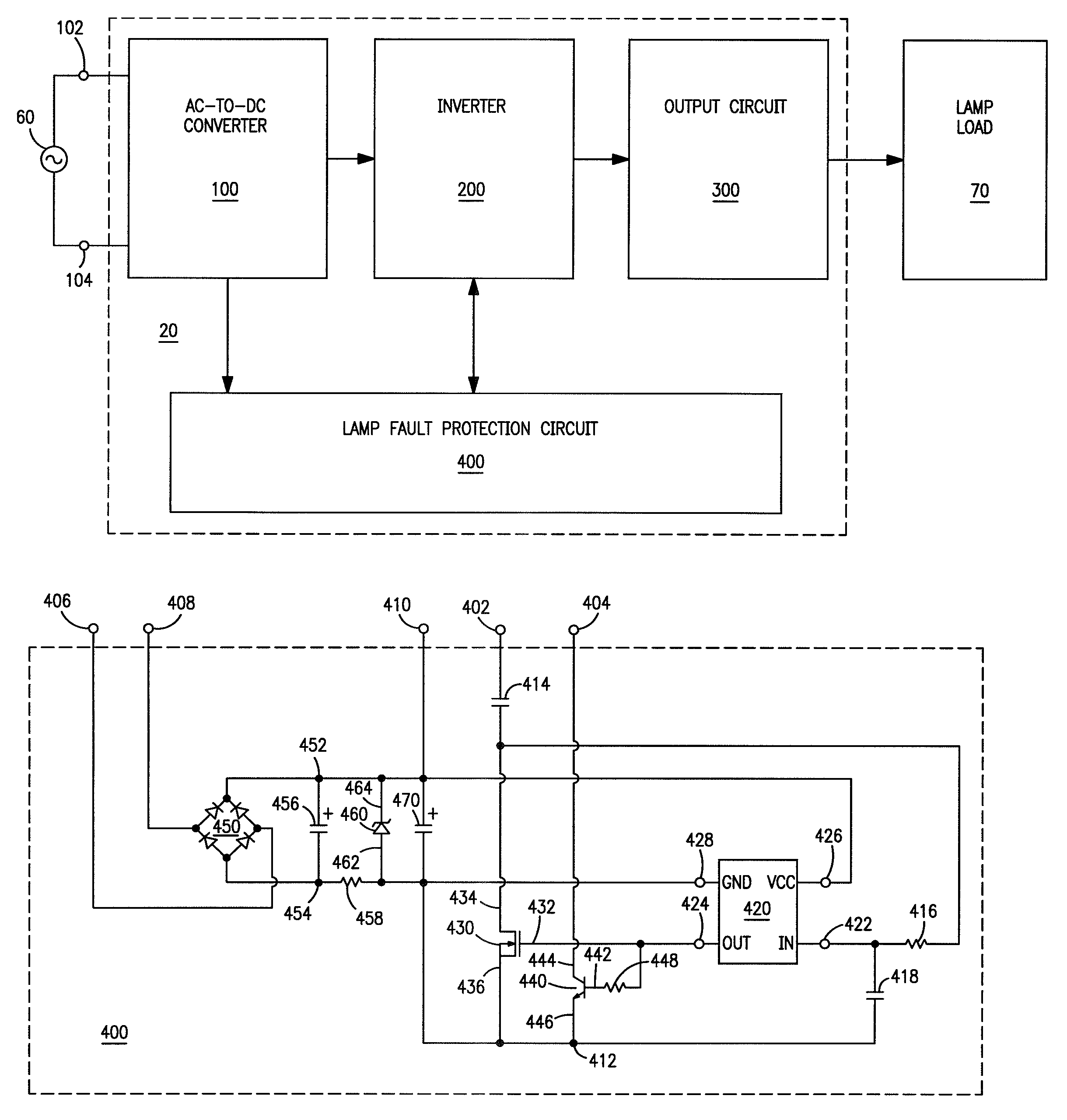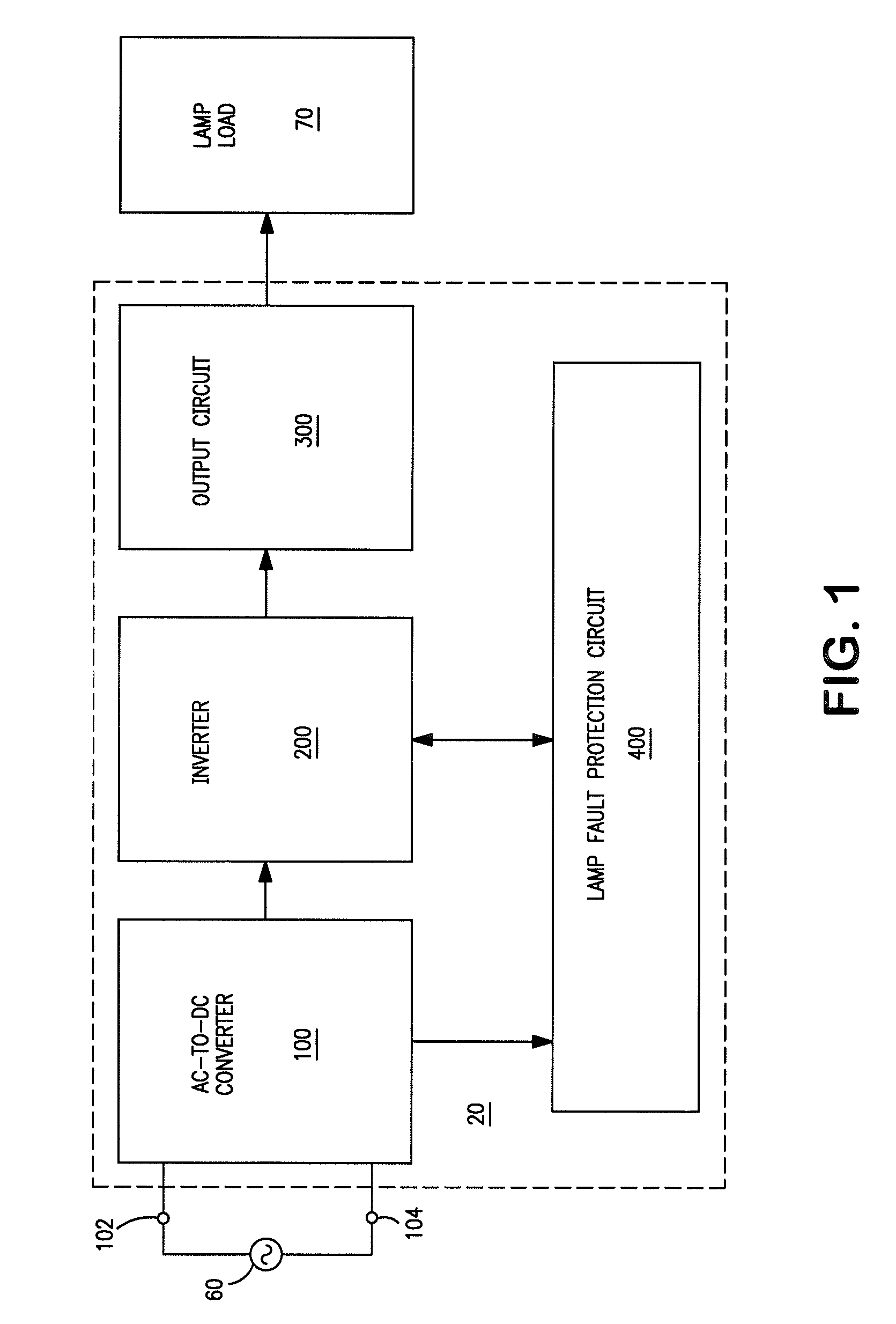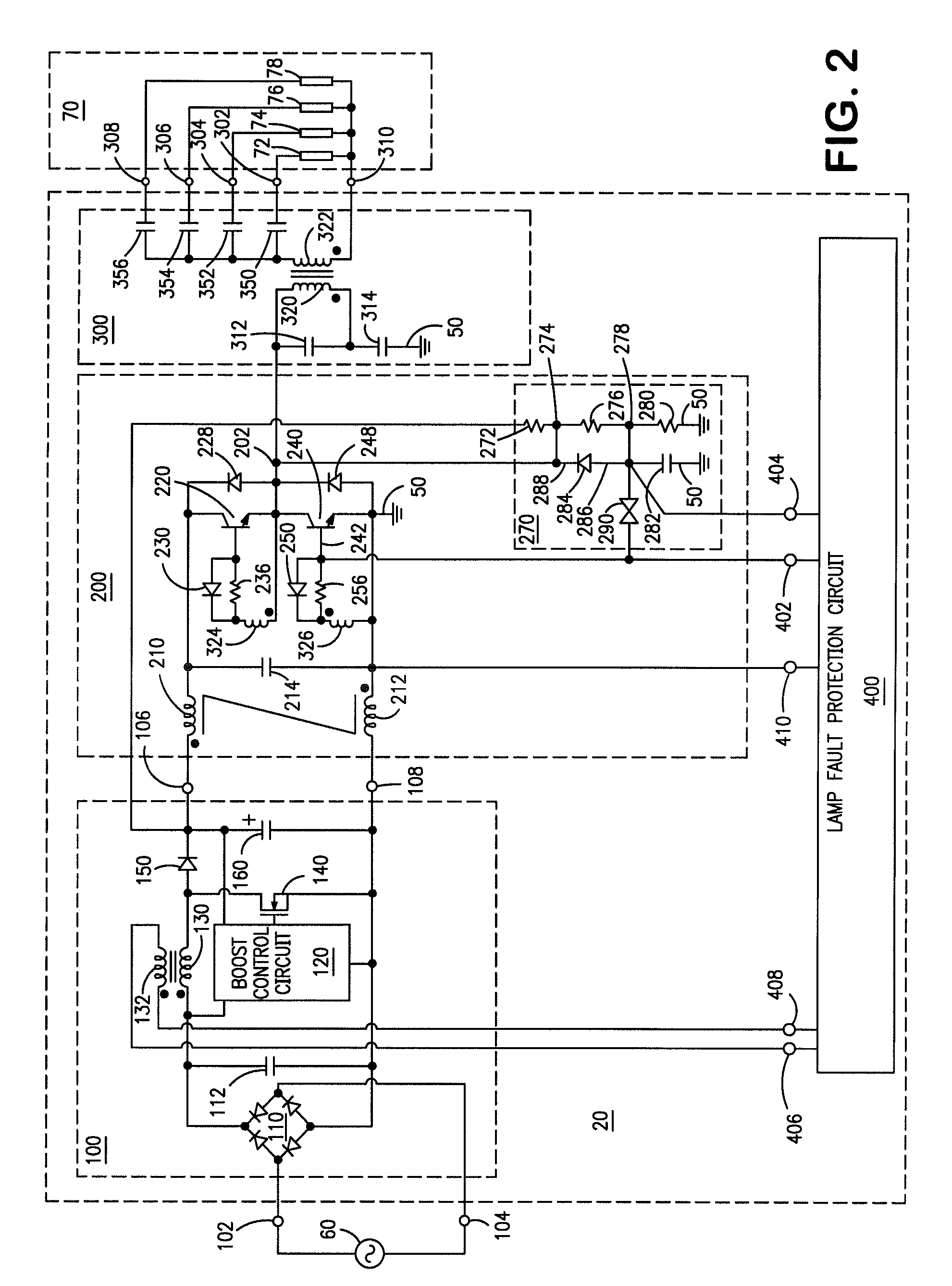Such a fault detection approach is effective and economical for ballasts that have a non-isolated output (i.e., no
output transformer interposed between the resonant output circuit and the connections to the lamps), but it is not well-suited for those types of ballasts (e.g., a ballasts that includes a current-fed self-oscillating inverter and a parallel resonant output circuit with an
output transformer) that inherently provide
electrical isolation between the ballast circuitry and the connections to the lamps.
As can be expected, the added presence of an isolation device increases the cost and complexity of the ballast.
This requirement poses a considerable inconvenience in many applications, such as in large office areas or factories, in which a large number of ballasts are often connected in the same
branch circuit.
For instance, the normal starting process of the inverter and lamps is generally accompanied by the same types of electrical disturbances that occur during a lamp fault condition.
Additionally, although most lamps are capable, under ideal conditions, of igniting and operating normally within a short period of time (e.g., 20 milliseconds), some lamps, due to age or low temperature, require a much longer time to ignite and stabilize.
Also, because lamps are somewhat unpredictable, it is possible that an otherwise “good” lamp may sometimes fail to properly start on the first attempt.
This regular brief flashing, which occurs on a sustained basis until either the lamp fault condition is corrected or power is removed from the ballast, is considered to be visually annoying to occupants who are in the vicinity of the affected lighting fixture.
Additionally, the periodic restart attempts are stressful to the components within the ballast.
As another example, a sustained arc (as opposed to a momentary arc) may occur due to poor or faulty connections in the output wiring or the lamp sockets, or if a lamp is improperly installed in such a way that a small gap exists between the lamp pins and the contacts within the fixture sockets.
If a connection to a lamp is compromised due to a defective lamp socket or defective wiring, a
high intensity, high temperature arc may be produced across the air gap caused by those faulty connections.
Arcing is generally acknowledged to cause degradation of the contacts in the fixture sockets and undue stress on components within the ballast.
Sustained arcing is especially undesirable because of its tendency to produce potentially destructive heating.
Existing approaches for lamp fault protection are largely limited to protecting against more conventional types of lamp faults (e.g., failure or removal of a lamp,
diode mode operation, and degassed lamp), and do not provide reliable protection against output arcing.
Conversely, existing approaches for protecting against output arcing generally do not protect against more conventional types of lamp faults.
Besides being susceptible to problems attributable to electrical
noise, analog approaches are generally sensitive to variations in component tolerances and operating parameters, and are therefore often quite lacking as to robustness.
More particularly, analog approaches are generally incapable of compensating for the fact that significant parameters of the ballast circuitry and the lamps tend to vary with time and temperature.
For example, it is well known that the
operating voltage and current of a
gas discharge lamp tends to significantly change as the lamp “warms up.” As another example, certain ballast components such as integrated circuits are prone to considerable parameter variations (e.g., in the frequency of the internal oscillator) as the ballast ambient temperature changes.
In some applications, some of the deficiencies attributable to component tolerances and parameter variations can be reduced by design measures (e.g., using components with “tight” tolerances), but almost certainly at the price of substantial added cost to the ballast.
Yet another shortcoming of many existing approaches to lamp fault protection is that those circuits often require a considerable amount of operating power.
Typically, the operating power requirements increase with
circuit complexity, especially when analog circuitry is extensively employed.
Consequently, those circuits significantly detract from the overall energy efficiency of the ballast.
However, providing reliable lamp fault protection within these types of ballasts presents a significant
engineering challenge.
As previously discussed, existing approaches based upon analog detection have a number of deficiencies, including costly / complicated circuitry, susceptibility to electrical
noise, sensitivity to parameter variations and component tolerances, and a need for providing
electrical isolation between at least portions of the lamp fault protection circuit and the rest of the ballast circuitry.
Additionally, many prior art approaches are susceptible to problems relating to detection resolution, and are therefore ill-suited for ballasts that power multiple (e.g., three or four) lamps.
Because of this problem, one existing approach has been to provide a separate inverter and output circuit for each of the lamps powered by the ballast; such an approach has the obvious
disadvantage of being quite expensive, especially for ballasts that power three or four lamps (in which case three or four separate inverters and output circuits are required).
 Login to View More
Login to View More  Login to View More
Login to View More 


